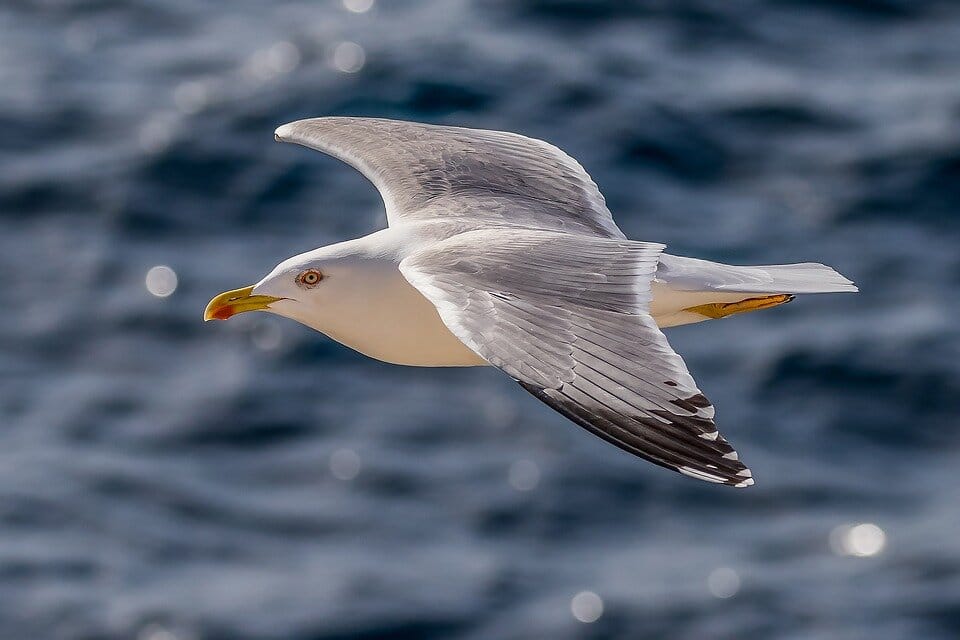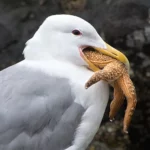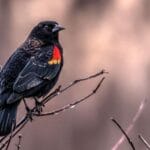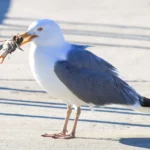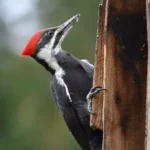Hey there, curious minds! As the cold winds howl and icy blankets the land, let’s embark on a winter adventure to discover how seagulls, those fearless flyers, manage to thrive in the face of nature’s icy wrath. We’ll dive into their secret survival strategies, from their cozy communal huddles to their surprising ability to adapt and conquer the challenges of the season. Get ready to be amazed by the resilience and adaptability of these winged wonders!
What do Seagulls Do in the Winter?
When those chilly winter winds start blowing, you might wonder what happens to our feathered beach buddies, the seagulls. Don’t worry, they’re not flying to the moon! They’ve got their own winter survival strategies.
Meet the Snowbirds
Some seagulls are like us, they prefer to head south for the winter. They take a vacation to warmer places where they can find more food and less ice. But not all seagulls are snowbirds. Some of them tough it out in their summer homes, even in the snow.
Coastal Hideaways
For those seagulls who choose to stick around, the coast is their winter playground. They love to hang out around the water where they can find food and shelter. Fish, crabs, and other tasty treats are on the menu. And when they’re not busy diving for dinner, they can take a nap on the beach or on a handy rock.
City Slickers
Seagulls have also become city dwellers these days. They’ve realized there’s plenty of food to be found in our urban jungles. Dumpsters, garbage cans, and even our leftover pizza are all fair game. Plus, buildings and skyscrapers provide great places to roost and keep out of the cold.
Winter Survival Tips
So, how do seagulls manage to survive the winter? Here are a few of their secrets:
- Fluff up their feathers: This creates cozy air pockets that help them stay warm.
- Huddle together: Seagulls often huddle together in groups to share body heat and protect themselves from the wind.
- Eat more: They need to consume more calories to keep their energy levels up in the cold.
- Find shelter: They seek out sheltered areas like buildings, under bridges, and in trees to escape the elements. Craving to know what seagulls eat? What Do Seagulls Eat will reveal their extraordinary and opportunistic diet.
Unveiling the mystery behind the culinary adventures of seagulls, what do seagulls taste like explores the unique flavor profile of these avian scavengers.
Embark on a marine gastronomy journey with seagulls as our guides. what do seagulls eat in the ocean uncovers the fascinating array of aquatic delicacies that sustain these feathered foragers.
Amazing Adaptations of Seagulls for Winter Survival: Unlocking Nature’s Secrets
Imagine being a seagull facing the challenges of a bone-chilling winter. How do these coastal birds cope with freezing temperatures, dwindling food supplies, and harsh winds? You’ll be amazed by the remarkable adaptations that nature has bestowed upon them, ensuring their survival in this unforgiving season.
Feathers: Nature’s Warmest Blanket
Picture this: a seagull covered in feathers that are as thick and waterproof as an Arctic explorer’s sleeping bag. These feathers act like a warm, cozy blanket, trapping air to keep the bird insulated. Even in icy conditions, they stay toasty warm!
Metabolic Boost: A Natural Furnace
To fight the cold, seagulls fire up their bodies like miniature furnaces. They speed up their metabolism, burning fat reserves and taking in more food to generate extra body heat. It’s like having a built-in heater, keeping them cozy from within.
Fat Deposits: Their Winter Energy Bank
In anticipation of leaner times, seagulls accumulate fat deposits throughout their bodies. These reserves become their energy lifeline during winter, providing them with the fuel they need to stay alive when food is scarce. It’s nature’s way of ensuring they don’t run out of gas in the midst of winter’s challenge.
Huddling: A Cozy Embrace
When the cold bites, seagulls don’t shy away from a good cuddle. They huddle together in groups, sharing their body heat and shielding each other from the wind and rain. Imagine a flock of seagulls huddling together, looking like a giant fluffy ball, defying the cold together.
Feeding Strategies: Adapting to Scarcity
As food becomes harder to find, seagulls become opportunistic. They venture into urban areas, scavenging for scraps in trash cans and hanging around human settlements. They’ll even resort to eating whatever they can find in the frozen waters. It’s a testament to their resilience and adaptability.
Migration: Heading South for Sun
Some seagulls take a more drastic approach to winter survival: they migrate. They fly to warmer regions where food is more plentiful and the weather is less extreme. It’s like their own version of a winter vacation, where they enjoy a tropical paradise while the rest of us shiver at home.
Urban Exploiters: Making Cities Their Winter Sanctuary
Seagulls have also learned to take advantage of urban environments. They find shelter in buildings, bridges, and even underneath cars. They’ve become quite adept at living alongside humans, exploiting the resources of our cities to help them weather the winter.
Conclusion
Seagulls’ survival in winter is a testament to nature’s incredible ability to adapt. These birds have evolved remarkable physiological, behavioral, and environmental adaptations that allow them to thrive even in the harshest of conditions. From thick feathers to fat reserves and urban foraging, they showcase the diversity and resilience of life on Earth.
Uncovering the Mysteries of Seagull Winter Life: Where Do They Go and How Do They Adapt?
When winter’s icy claws grip the land, we often wonder where our feathered friends from the coast vanish. Seagulls, with their piercing cries and carefree attitudes, seem to disappear from our view. But little do we know, they embark on a remarkable journey to survive the harsh conditions.
Migration: A Flight to Warmer Skies
As the days grow shorter and the cold intensifies, seagulls take flight, leaving behind the frozen shores. They migrate to warmer climates, traveling vast distances – some even venturing thousands of miles. These birds are skilled navigators, using landmarks, the stars, and even the Earth’s magnetic field to guide their way.
Nature’s Insulation: Adapting to the Cold
Seagulls have evolved unique ways to battle the winter’s chill. Their feathers are like tiny, downy blankets, trapping warm air close to their bodies. They also fluff up these feathers, creating an even thicker layer of insulation. And when the temperature drops too low, they huddle together, forming a protective circle to conserve heat.
Urban Survival: A Story of Resilience
As their coastal habitats shrink, seagulls have shown amazing adaptability by moving into urban areas. They scavenge for food in dumpsters and landfills, and have even found shelter in abandoned buildings and bridges. This remarkable ability to adapt to their surroundings has helped them thrive in the concrete jungle.
A Symphony of Survival
Seagulls have developed a keen sense of intelligence and social behavior to enhance their survival. They work together to find food, protect their young, and endure the harshest of conditions. Their ability to adapt and overcome winter’s challenges is a testament to the resilience of the natural world.
Table: Seagull Winter Adaptations
| Adaptation | Description |
|---|---|
| Migration | Traveling to warmer climates to escape winter |
| Navigation | Using landmarks, stars, and magnetic fields to guide their way |
| Feather Insulation | Trapping warm air with thick, downy feathers |
| Huddling | Forming tight circles to conserve heat |
| Urban Adaptation | Exploiting urban environments for food and shelter |
| Intelligence and Cooperation | Collaborating to find food, protect young, and survive challenges |
Conclusion
Winter may be a season of icy grip and fading light, but for seagulls, it’s a testament to their remarkable adaptations and never-ending fight for survival. From their epic migrations to their clever urban survival strategies, these coastal creatures embody the indomitable spirit that permeates the natural world. By observing and appreciating their resilience, we gain a deeper understanding of the interconnectedness of life and the importance of preserving the delicate balance of ecosystems.
Decoding Seagull Behavior in the Winter: Unraveling Their Survival Strategies
As winter’s icy grip tightens, seagulls don’t just hunker down and wait for the cold to pass. Instead, they embark on a fascinating journey to escape the harsh conditions. They’re like seasoned nomads, navigating the skies to warmer destinations where life’s a little easier.
How Seagulls Handle the Cold
Seagulls are bundled up for winter, with their feathers fluffed up like a down comforter. They also cuddle close to each other for extra warmth. When the sun goes down, they seek shelter in buildings, bridges, or even trees.
The Food Quest
Finding food is a top priority for seagulls during winter. They’ll migrate to places where there’s plenty to eat. Coastal areas and urban garbage cans are often their favorite spots.
Pecking Order
Even in winter, seagulls have their social pecking order. They show off their power through aggressive displays and defend their territory. This helps them establish a hierarchy that keeps everyone in line.
Migration Marvels
Seagulls migrate to escape the cold and find food. But they’re not just mindless travelers. They’re actually pretty smart. They fly together in groups, take breaks to rest and refuel, and even navigate using the sun and stars.
Winter Adaptations
Seagulls have some impressive tricks up their sleeves for surviving winter. They can sleep with only half of their brain active, which helps them navigate nocturnal flights safely. They also have a special gland that secretes an oil to keep their feathers waterproof.
Social Dynamics
Winter is like a giant social experiment for seagulls. They form colonies and work together to find food and defend their territory. But it’s not all sweetness and light. Aggressive displays and territorial disputes are common, especially during the breeding season.
Conclusion
Winter is a time of change and challenge for seagulls. But they’re no pushovers. They’ve evolved some amazing adaptations and social strategies that help them not just survive but thrive in the face of winter’s icy grip. Watching them in action is like getting a glimpse into the secret life of birds.
FAQ
Q1: Where do seagulls go during winter?
A1: Seagulls migrate to warmer regions during winter to avoid harsh conditions and find abundant food sources.
Q2: How do seagulls adapt to winter weather?
A2: Seagulls have evolved physiological adaptations such as increased body fat and thicker feathers to withstand cold temperatures. They also roost together for warmth and protection from the elements.
Q3: What do seagulls eat during winter?
A3: In winter, seagulls primarily feed on fish, small mammals, and scavenged food. They may also eat insects, berries, and other available sources.
Q4: Do seagulls hibernate during winter?
A4: No, seagulls do not hibernate during winter. They remain active and continue to forage for food throughout the season.
Q5: How far do seagulls migrate during winter?
A5: Migration distances vary depending on the species and location. Some seagulls migrate short distances, while others, like the Arctic tern, undertake long-distance journeys that span thousands of miles.
- Senior at What Age: Benefits & Eligibility Guide - March 29, 2025
- Unlocking Senior Benefits: How Old is a Senior? Your Complete Guide - March 29, 2025
- Master Russian Politeness:A Guide to Saying Please - March 29, 2025
